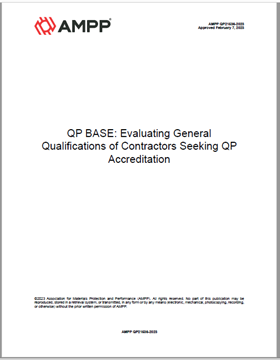Search
Coatings
View as
Sort by
Display
per page
Air-Drying Waterborne One-Pack Coatings For Corrosion Protection
Product Number:
41213-767-SG
Publication Date:
2013
$20.00
Alloying Effect Of Mo In Martensitic Stainless Steel On Passive Film In H2S-CO2 Environment
Product Number:
51322-17538-SG
Publication Date:
2022
$20.00
Alphatic Polyurea Speification - The Development of SSPC Paint Specification 39
Product Number:
41205-183-SG
Publication Date:
2005
$20.00
Alphatic Thick Film Coatings - How You Can Habe Your Cake and Eat it Too!!
Product Number:
41206-270-SG
Publication Date:
2006
$20.00
Aluminum Corrosion & Corrosion Prevention in a Seacoast Atmospheric Environment
Product Number:
51219-222-SG
Publication Date:
2019
$20.00
Ambient Curing and Thermosetting of Polyurea and Polyurethane Castable Liner
Product Number:
41210-524-SG
Publication Date:
2010
$20.00
AMPP Guide 21529-2024, Railcars: Calibration Requirements of Coating Application and Inspection Equipment
Product Number:
AMPP Guide 21529-2024
Publication Date:
2024
$109.00
AMPP Guide 21614-2023, Guide for Improving the Statistical Quality of Dry Coating Thickness Data on Ferrous and Non-ferrous Metal Substrates Using Continuous Read/Scanning Technology
Product Number:
AMPP Guide 21614-2023
Publication Date:
2023
$109.00
AMPP MR21562-2024, Polysiloxane Topcoat for Exterior Exposure, Performance-Based
Product Number:
AMPP MR21562-2024
$109.00
AMPP QP21536-2023, QP BASE: Evaluating General Qualifications of Contractors Seeking QP Accreditation
Product Number:
AMPP QP21536-2023
Publication Date:
2023
$109.00












